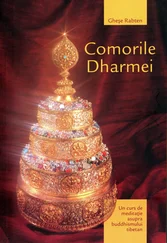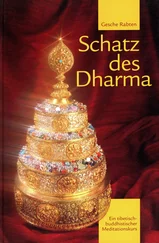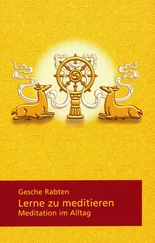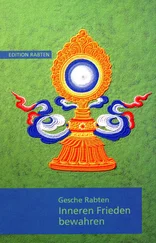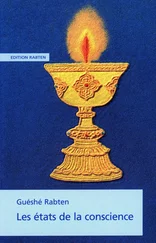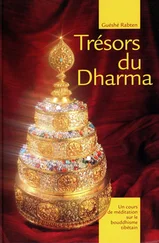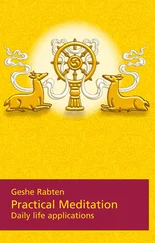Out of the immeasurable amount of his teachings of Dharma, he gave the teachings contained in this book in 1974 in Rolle, Switzerland at a place called Près de Verts. There for he gave a very intensive three-week meditation course to a gathering of over onehundred people. This teaching contains all the essential points of Dharma without exception. He taught it all out of his own experience and, because of his great compassion and skilfulness, he presented it in the clearest and most understandable manner, which is a well-known quality of his teachings. Therefore it is certain to illuminate the mind of anyone sincerely interested in Dharma. The readers will find the proof of this in themselves.
This teaching was first orally translated into English in a very literal way by myself. My friend Brian Grabia, a long-time student of Geshe Rinpoche, corrected the English very thoroughly and made it available in this beautiful written form, a pleasure to read for everybody. I would like to express my deep thanks to him.
If one keeps the precious jewels coming out of this Treasury in one’s heart, they cannot be taken away by anybody and will radiate the light of immeasurable benefit and happiness for oneself and for others.
I conclude this foreword with my prayers for the long life of our dear Venerable Tenzin Rabgye Rinpoche, the young reincarnation of the author of this book, our beloved Master Venerable Geshe Rabten Rinpoche.
Gonsar Tulku
Le Mont-Pèlerin, Switzerland
April 1997
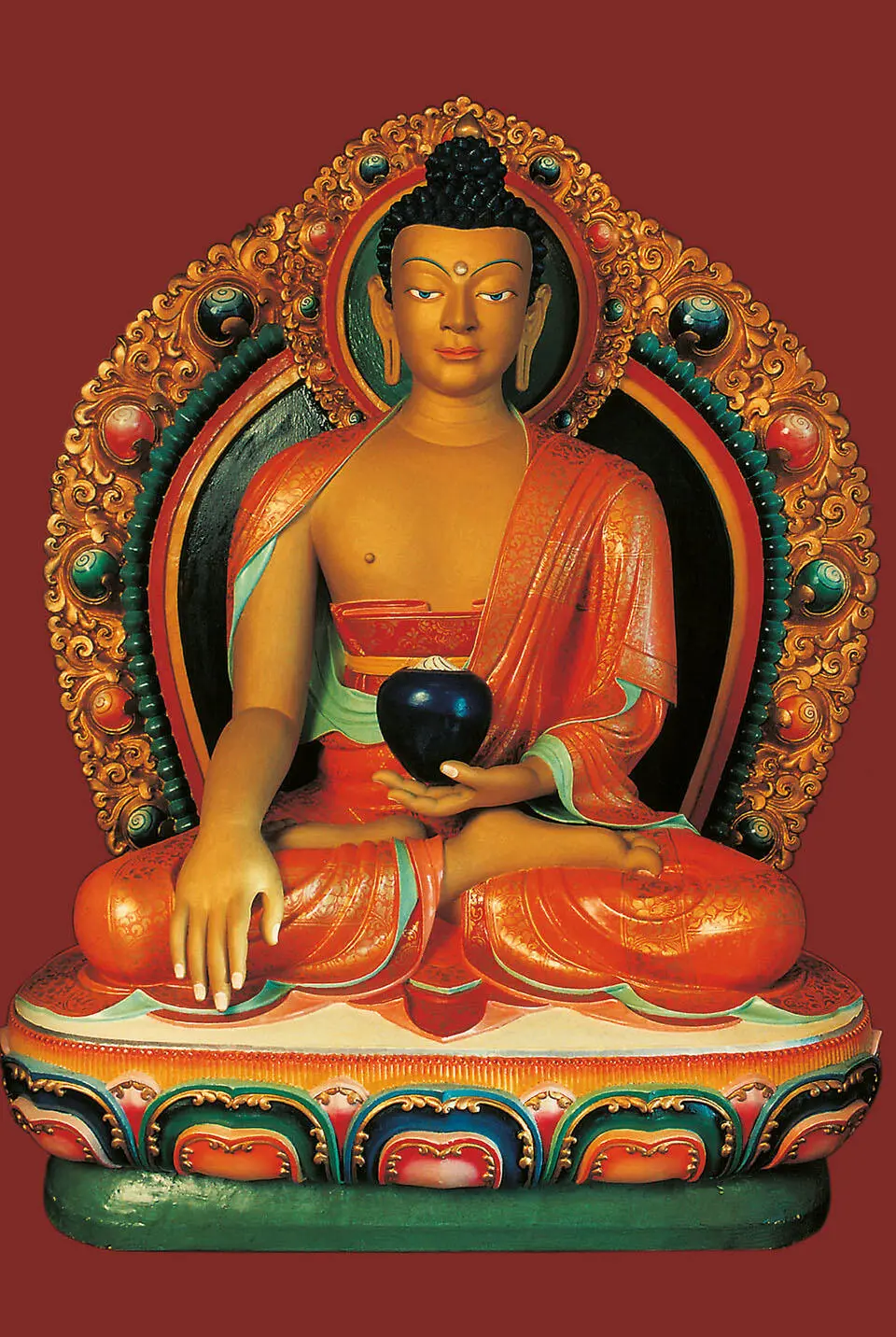 Buddha Shakyamuni
Buddha Shakyamuni
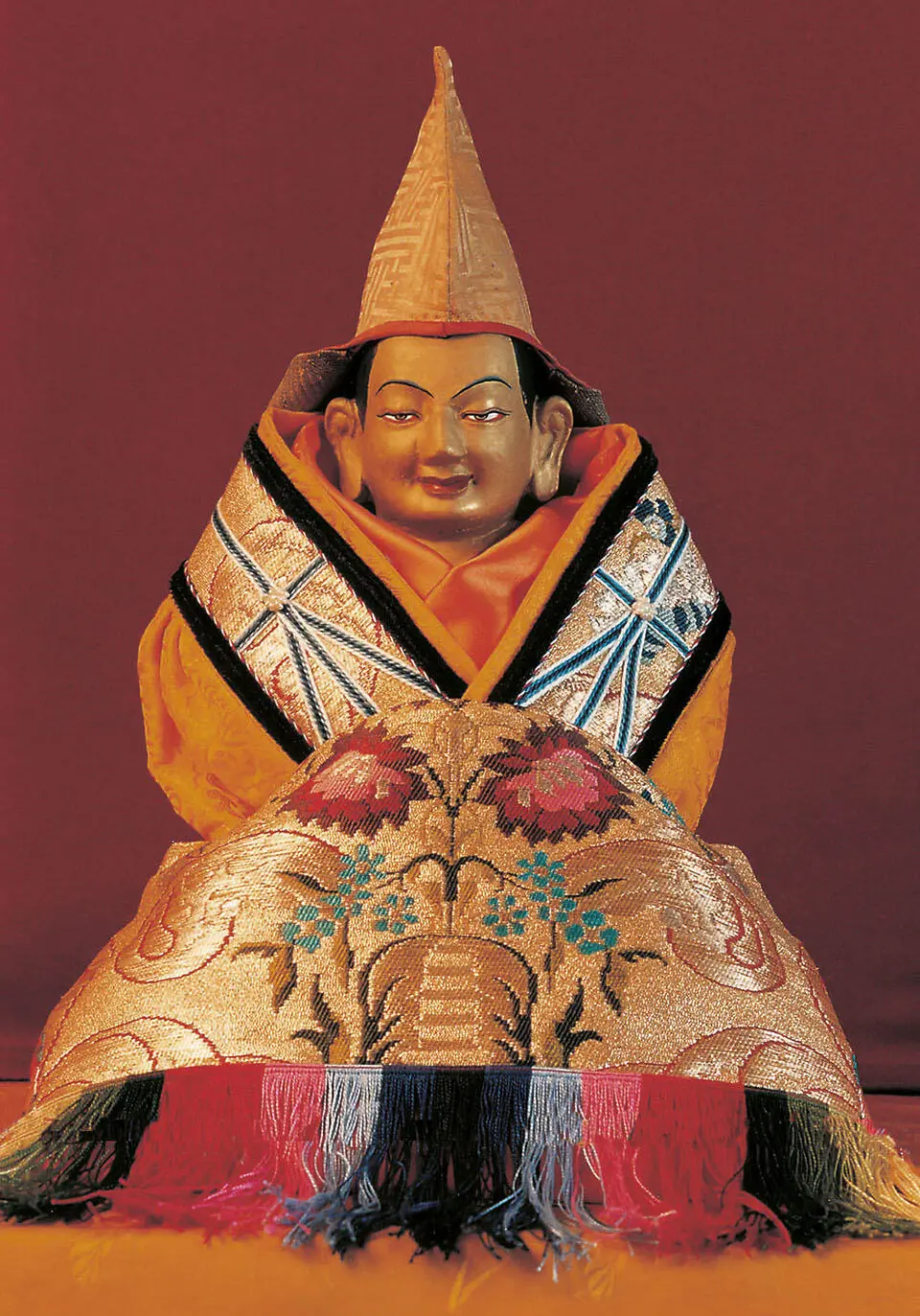 Je Tsongkhapa
Je Tsongkhapa
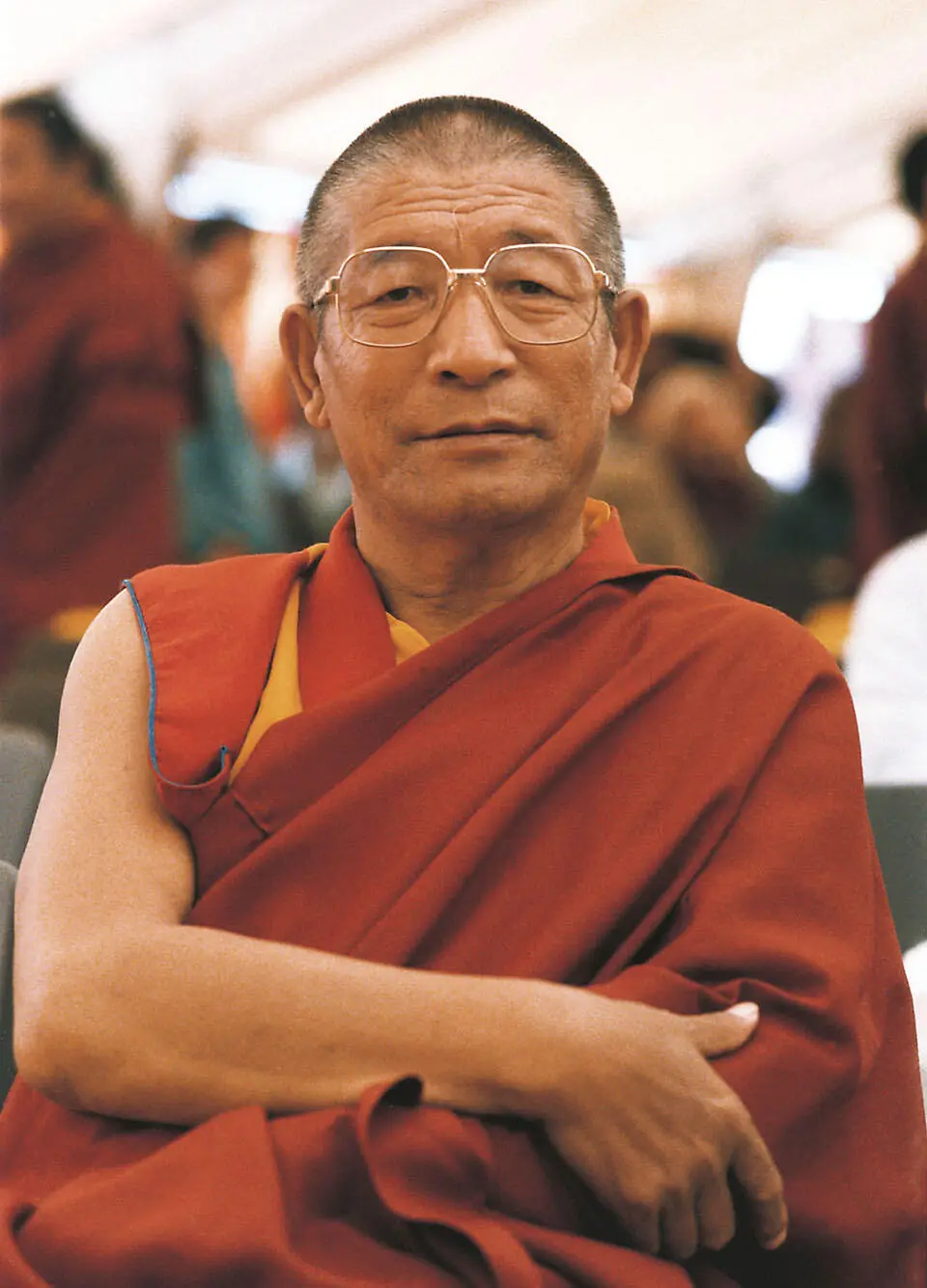 Venerable Geshe Rabten Rinpoche
Venerable Geshe Rabten Rinpoche
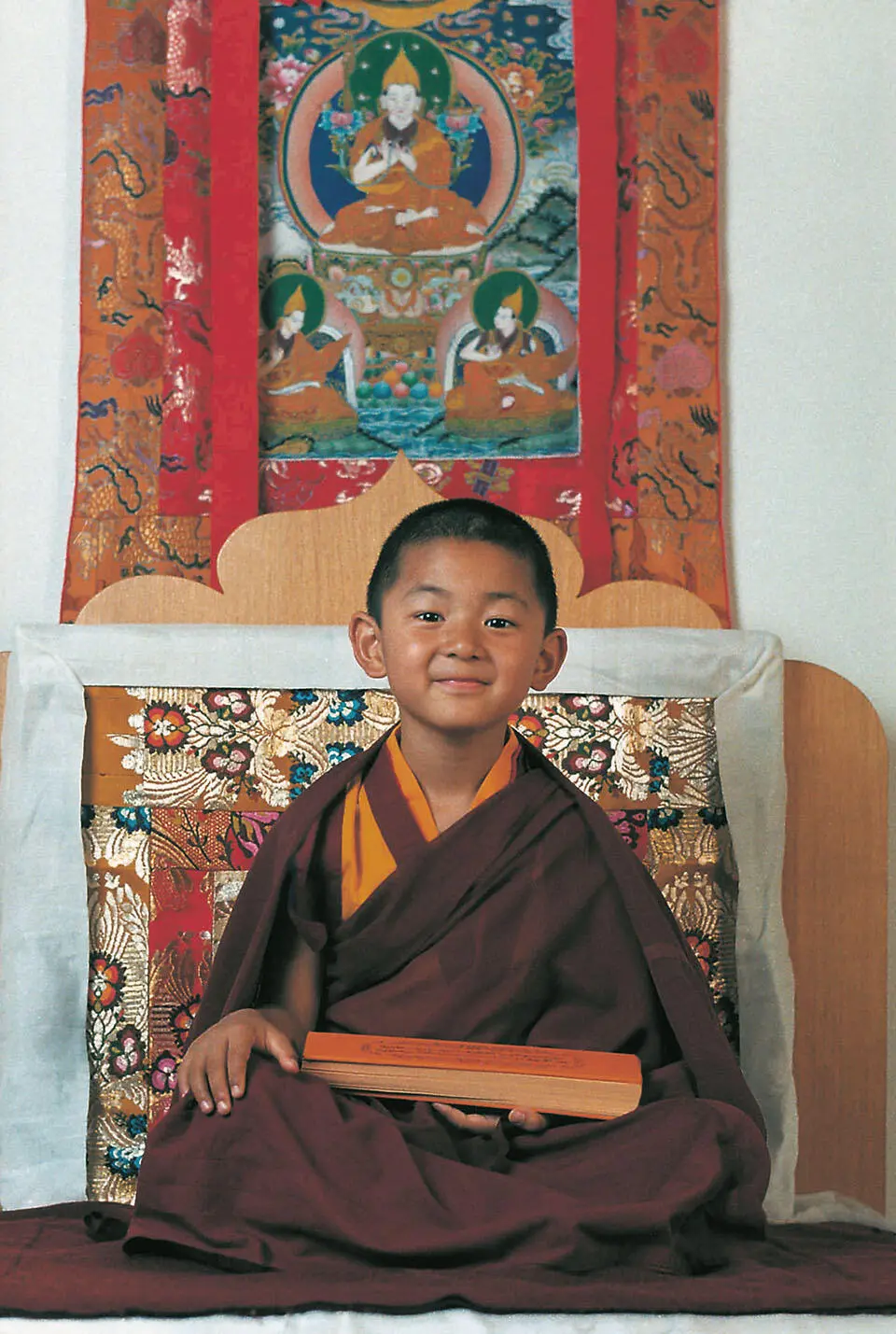 Venerable Rabten Tulku Rinpoche
Venerable Rabten Tulku Rinpoche
Buddha Shakyamuni
The founder of Buddhism. This statue is the central figure in the main temple of Rabten Choeling.
Je Tsongkhapa
A merchant, a disciple of Je Tsongkhapa, miraculously found a statue of his master in a lake. He had a mould made from it. Je Tsongkhapa blessed it personally and said: ‘O merchant, this is a wholesome action.’ Since then, statues cast from this mould, such as the one shown in this picture, are known as Tsong Poen Geleg (the virtuous merchant). These rare statues are highly revered in Tibet.
Venerable Geshe Rabten Rinpoche
Venerable Rabten Tulku Rinpoche
The reincarnation of Ven. Geshe Rabten Rinpoche born in 1987 in Northern India, presently living in Switzerland under the care of Ven. Gonsar Rinpoche.
I am very happy to see you all here. The fact that we have gathered to listen to the Dharma is certainly a sign of our having established a relationship in the past. In the next few days we shall try to learn something about the Dharma. A human being is a combination of body, speech and mind. But the work we shall be doing here will be mainly concerned with the mind. While we are here together it will be a good idea to follow a fairly disciplined way of life. Usually, we spend a great deal of time talking, often saying the first thing that comes to our minds. But while we are here let us try to refrain from this type of small talk and speak only of things which are relevant to the Dharma. This is especially important if, when the teaching is over, we want to be able to meditate on it. If we expect to get results at that time we must start now by paying attention to the teaching and by checking our actions during the course of the day. That is why we should talk only about matters relating to the Dharma and what we are doing here.
We usually go wherever we feel like going, but those who are living here in the house should stay on the premises during the course of the teaching. For those of you who are commuting, please try to keep your travel to a minimum and to avoid any unnecessary activity during this time. Unless we limit our movements and concentrate on the teaching, later, when we try to meditate, we will not get the positive results we would like.
Usually, our mind is busy with a whole host of thoughts. We make many plans and spend a great deal of time thinking about them. But for the duration of this course, we should try to control our minds and avoid thoughts which are unconnected to the Dharma. Again, this is essential if we wish to obtain any results from our meditation and practice.
If our body, speech and mind work together and are concentrated on the teaching, we can expect positive changes. You have all come here to listen to the Dharma and this makes me very glad. During this time you should try to be kind and considerate towards one another and to behave calmly and peacefully. Because the purpose of the Dharma is to bring harmony to everyone we must start by being peaceful and harmonious among ourselves. It would be best too if you refrained from smoking, at least in such places as the meditation room. For the duration of the course you should try to be as energetically and wholly devoted to your practice as possible. Although we may not have many days to spend together, if we use them in this way we will be using our time well and can expect to obtain satisfactory results. I will teach every day and as some of you have little or no experience of Dharma practice it is possible that you will not understand some of the things I will speak about. If this happens, please make a note about what isn’t clear and if necessary we can discuss it privately. Whatever the case, I hope that you will take notes and think at great length about what is said, not just letting it in one ear and out the other.
When listening to the Dharma, therefore, you should try to remain attentive and to be as little distracted as possible. If, instead, your eyes wander and you think about whatever comes to mind you will be unable to retain what you hear. When a cup is lying on its side, try as we may we will never be able to fill it with water. This illustrates the effect or rather lack of effect that the teaching of the Dharma has on a person who is listening distractedly. If you are listening closely, the next requisite is that you remember what has been said and think about it often. This will enable you to keep in mind what you have heard. If we pour water into a cup with a hole in it, it will only run out. This is like someone who listens to the Dharma but makes no effort to remember it.
The primary purpose of our Dharma practice is to get rid of suffering, the pain which pervades us both physically and mentally. It is not a means of achieving fame, of accumulating wealth or attaining any other kind of worldly goal. We should listen to the Dharma with the motive of eliminating our unhappiness. Someone who engages in Dharma practice is comparable to someone who is ill. The person teaching is like a doctor and the Dharma itself is like the medicine or cure for the disease. In brief, there are three ways of listening to the Dharma: listening well and attentively, keeping what is taught in mind, and having the proper motivation.
In the first part of this teaching, I will speak about the four noble truths. These are the truth of suffering, the truth of the origin of suffering, the truth of the cessation of suffering and the truth of the path. During the latter half I will talk more particularly about the Mahayana path. This teaching will not be of an academic nature but will be based on those aspects of the Dharma which will be most beneficial to most of us here. This concludes my introductory remarks.
Читать дальше
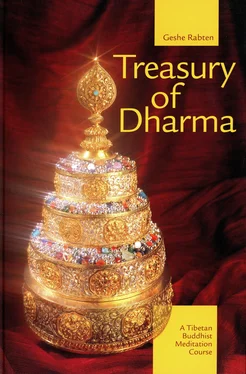
 Buddha Shakyamuni
Buddha Shakyamuni Je Tsongkhapa
Je Tsongkhapa Venerable Geshe Rabten Rinpoche
Venerable Geshe Rabten Rinpoche Venerable Rabten Tulku Rinpoche
Venerable Rabten Tulku Rinpoche
